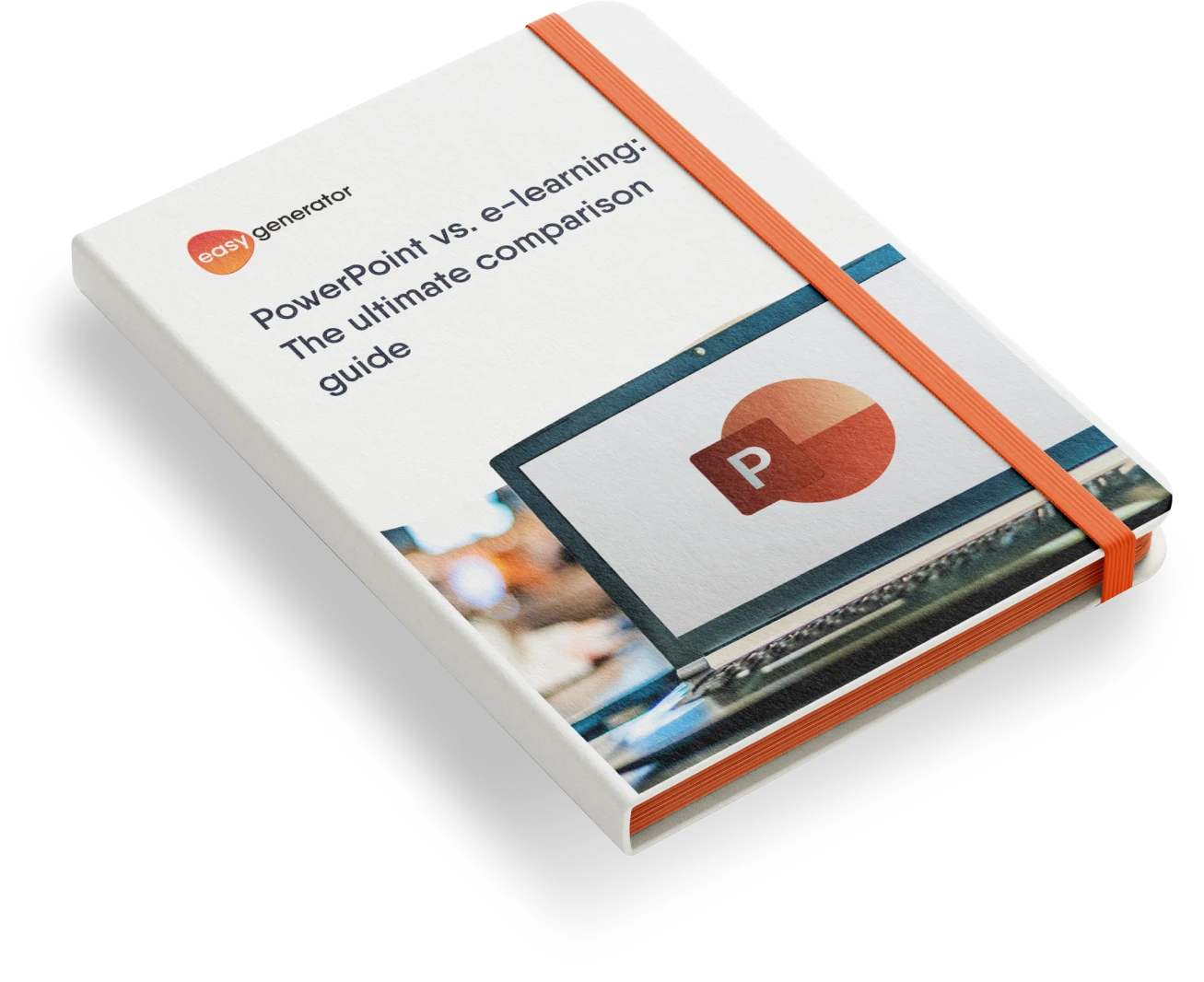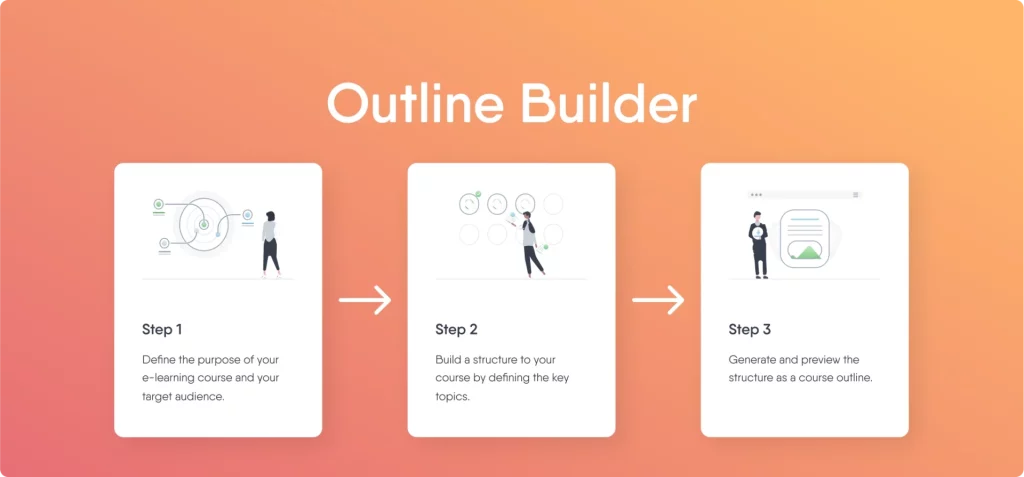Want to create effective e-learning content? Stop using PowerPoint!
If you’ve ever had to sit through a lengthy PowerPoint presentation during a training session or college course, then you’ll probably have no trouble understanding the phrase “death by PowerPoint.”

The old, familiar slideshow-style presentation software from Microsoft still has a die-hard following in the L&D world today. In training rooms and e-learning courses throughout the corporate world, learners find themselves flipping through the slides of a PowerPoint presentation.
But, as most of us know from personal experience, PowerPoint presentations are not the most effective form of conveying knowledge. There are many clear reasons for this. Below, we show you some of the main reasons why PowerPoint is not the best solution when it comes to creating e-learning content.
Why PowerPoint isn’t effective e-learning
Reason #1: Content-heavy presentations
PowerPoint presentations are often very heavy on content, which means they are loaded with text. That’s why many of your learners will perceive them as time-consuming, complicated, and simply boring. Your learners are far more interested in acquiring information in concise, easy-to-read nuggets.
So, for effective e-learning, consider breaking the text down into smaller portions, or using visual alternatives like video, infographics, flowcharts, or diagrams. Modern e-learning authoring software provides many engaging options other than text, so you can choose the medium that works best for the information you’re trying to communicate.
Reason #2: Information overload
Have you ever found yourself zoning out halfway through a PowerPoint presentation? Or, even worse, have you ever been giving a PowerPoint presentation and felt like your audience was zoning out? No matter how interesting the topic is, it’s still easy to become overwhelmed by the amount of information contained in a PowerPoint presentation.
According to conventional wisdom, each slide on a PowerPoint presentation should cover about two minutes’ worth of information. That means up to 30 slides in a one-hour session. It’s hard enough to keep three or four thoughts clear in your mind at once, let alone 30! So, clearly, PowerPoint risks bombarding learners with loads of information, with very little chance that they can keep up with it all.
If you’d like to convert your existing PowerPoint training content into e-learning, we’ve prepared a short training session.
Reason #3: Less is more
PowerPoint presentations are generally too long and content-heavy. This is simply out of touch with modern learning preferences. When it comes to effective e-learning, your learners thrive when they have access to short, easily digestible bits of information.
It’s no wonder that microlearning has become such a major trend in the e-learning world. Microlearning uses new technologies such as mobile learning and quick video tutorials. This type of media provides content in just the right amounts for your learners to quickly get the specific information they need.
Of course, there’s nothing wrong with using text in your microlearning or other e-learning content. Just remember to keep texts as short and concise as possible.
Reason #4: No learning checkpoints
To keep your learners on track and ensure they are acquiring the right knowledge, your e-learning content must include performance assessments. PowerPoint, however, is a one-way flow of information. The learner has no opportunity to test their knowledge along the way. That’s why it’s far more important to choose an e-learning authoring tool like Easygenerator, which enables you to include plenty of assessment questions at every stage of the course.
It’s best to use a variety of assessment types because these require the learner to engage with the information on multiple levels. Assessments are not just about making sure your learners acquire knowledge; they also facilitate the learning process by keeping learners alert and making them engage with the content.
Reason #5: Lack of interactivity
One last reason why PowerPoint may leave your learners yawning is that it lacks one ingredient that is crucial to success: interactivity.
Studies show that by enabling your learners to control the pace of the content, provide their feedback and receive personalized feedback themselves, you can boost their perception of how useful the content is. Creating a positive, interactive learning experience leads to better learning outcomes because it automatically makes learners more comfortable with the content itself.
Effective e-learning techniques
PowerPoint and other one-way slideshow presentations have been a standard feature in training classrooms around the world for decades. Thanks to newer, more effective methods, the days of PowerPoint are slowly coming to an end in the e-learning world.
If you are in the process of setting up a new e-learning program or modernizing an old one, keep in mind the reasons why PowerPoint probably isn’t the best way to go.
By embracing more modern techniques, such as microlearning and mobile learning, you’ll keep your learners engaged and coming back for more effective e-learning techniques. The same goes for built-in assessments and interactivity features, like instant feedback. These are all the ingredients of a modern, effective e-learning course – all without a PowerPoint presentation in sight.
 14 day trial with access to all features. Start with variety of course templates.
14 day trial with access to all features. Start with variety of course templates. Get unlimited design inspirations. Level up your courses.
Get unlimited design inspirations. Level up your courses. Upload your PowerPoint presentations. Get instant courses created.
Upload your PowerPoint presentations. Get instant courses created.




